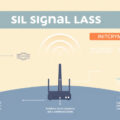As technology rapidly advances, older mesh Wi-Fi systems can often struggle to meet the demands of modern internet usage. With the proliferation of smart home devices and the need for seamless connectivity throughout homes, it’s essential to consider viable upgrade paths for aging mesh systems. This article will explore options for upgrading your Wi-Fi network, maximizing your current equipment, and providing tips for ensuring a smooth transition to newer technology.

Why Upgrade Your Mesh Network?
Older mesh Wi-Fi systems, typically designed to provide comprehensive coverage in homes, may fall short in performance as user needs evolve. Upgrading is particularly pertinent for users experiencing slow speeds, dead zones, or inconsistent connections. New standards like Wi-Fi 6 (802.11ax) and Wi-Fi 6E offer advanced features such as higher bandwidth, improved performance in congested environments, and reduced latency. These enhancements are particularly beneficial for homes with multiple devices streaming content or engaging in online gaming.
Upgrade Strategies
1. Reusing Your Old Gear
One of the most economical approaches to upgrading is to continue utilizing your existing mesh network equipment as complementary devices. Whether your outdated mesh router can serve as an extender for a new main router largely depends on compatibility:
- TP-Link Deco: All TP-Link Deco devices can work together, allowing for a gradual upgrade.
- Eero: Similar to TP-Link, Eero devices are interchangeable, allowing older models to be used as additional satellites.
- Asus AiMesh: This feature enables the integration of compatible Asus routers into a cohesive mesh network.
- Netgear Orbi: While older models may not work with newer Orbi systems, checking compatibility lists can help identify potential synergies.
Using your existing devices strategically can enhance coverage, especially in less prioritized areas of your home where high-speed connections are not crucial, such as basements or garages.
2. Forklift Upgrade
In situations where compatibility is limited, you might need a full upgrade, often termed a "forklift upgrade." This option entails replacing older devices entirely. While this approach may seem daunting, it often results in significant performance improvements. Before transitioning, consider the following:
- Assess your internet speed and capabilities. If your service isn’t fast enough to benefit from the latest standards, it might be wise to delay upgrading.
- Identify whether your devices support contemporary standards like Wi-Fi 6 or Wi-Fi 6E. Investing in these helps future-proof your network.
3. Addressing Smart Device Compatibility
When upgrading, one concern for users is maintaining connectivity with smart home devices. Many home automation setups, like those using Home Assistant, can typically handle migrations between networks with minimal fuss:
- Ensure that your smart devices are compatible with the new network’s standards and configuration.
- Most systems allow for device reconfiguration or migration without needing to uninstall or set up devices from scratch.
Seamless Transition Tips
- Plan for Downtime: Schedule your upgrade during off-peak hours when the network usage is minimal to limit disruptions.
- Backup Settings: If your older mesh system supports it, back up configuration settings, which may ease the reconfiguration process.
- Consider Your ISP: Sometimes, issues may stem from your Internet Service Provider, necessitating a review of your service package instead of your hardware.
Conclusion
Upgrading an aging mesh system is an essential step in ensuring optimal home connectivity. By understanding your current system’s capabilities, reusing older components where possible, and making informed choices about advancements in technology, you can create a network that not only meets today’s demands but is also ready for the future. Whether you’re extending your network’s reach with existing devices or committing to a complete upgrade, proactive measures can help you navigate the evolving landscape of home networking with ease.



